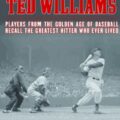I Had to Cut It Down: An Experiment in Destructive Criticism

There is then creative reading as well as creative writing. —Ralph Waldo Emerson
The role of the critic is the topic de jour, in part because of the smart and accessible book Better Living Through Criticism, recently published by New York Times film critic A. O. Scott. Scott floats several thought-provoking observations, but I found this one particularly compelling:
The critic’s task is to trace a twisted, looping, stutter-stepping, incomplete path toward the truth, and as such to fight an unending battle against premature and permanent certainty.
Meanwhile, at The Nation’s website, Barry Schwabsky issued an ars critica—excerpted from the introduction to his new book, The Perpetual Guest: Art in the Unfinished Present—in which he states, “My writing aims to keep art unfinished….” Both statements contradict that common image of the critic-as-explainer, justifying the ways of artists to audiences, or as arbiter of taste.
For Scott and Schwabsky, criticism is not so much about pinning a work down, or solving it like a puzzle, but almost the opposite: the critic’s task is to combat our inertia—viewer, artist, and critic alike—our natural tendency to close off prematurely the dialog between the work and viewer, and to instead encourage an open-ended and exploratory interaction with the work. This goal is simultaneously more humble, in that the critic exchanges her absolute authority for something more provisional, but also more ambitious, as the critic effectively becomes a collaborator with the artist.
This sort of criticism is especially important for works we think we know well, so well that we’ve become anaesthetized to them. There’s a tendency to feel that certain canonical works have yielded up all their secrets, that there’s really nothing more to say about them. So there’s nothing better than when a critic—or any writer or artist, for that matter—takes a familiar work and knocks the scale off of it, allowing us to see it as something new, relevant, or simply more resonant.
How this transformation might be accomplished is another matter, but scholars working in the digital humanities have suggested that technology might be helpful in this regard. Kathleen Fitzpatrick suggests that using digital technology to sort data and manipulate texts lets the critic enter into a dynamic relationship with the work under consideration. Working this way allows the critic to “think less about completed products and more about text in process; less about individual authorship and more about collaboration; less about originality and more about remix….”
One such tool may be Text Mechanic, a text manipulator. This simple website can sort lists alphabetically or by line length (in either ascending or descending order); it can reverse the order of the lines or shuffle them; it can add or remove line breaks. The list in this case? Any lineated poem one drops into the program.
William Carlos Williams’s iconic poem, “The Red Wheelbarrow,” presents a perfect test case, a rack upon which students (and, let’s admit it, their teachers) have been tortured for decades. When it comes to poetry, few other works have suffered more from classroom overexposure, which has transformed a groundbreaking example of 20th century poetry into a mere textbook illustration of “Imagism” and a vehicle of easy parody.
Here’s the original poem, in case you forgot. Note that in its original context, Williams’s poetry and prose hybrid book, Spring and All (1923), it was untitled and unpunctuated (sometimes anthologies and websites mistakenly add a period at the end):
so much depends
upona red wheel
barrowglazed with rain
waterbeside the white
chickens
It’s as familiar as a rerun of Cheers. Using the tool, here’s what the poem looks like when the lines are put in alphabetical order:
a red wheel
barrow
beside the white
chickens
glazed with rain
so much depends
upon
water
The reader will note that this poem—which, for convenience, I’ll call “Water”—has become something of an eco-poem, especially with the final three lines. The poem is also, perhaps, more in line with standard definitions of “imagism” than the original. In Williams’s poem, those decidedly unspecific and vague opening two lines—”so much depends / upon”—have always tripped up those wanting to discuss how the poem is a “direct treatment of the thing.” With “Water,” however, we go straight to the thing, with “so much depends / upon” emerging from, and returning to, particulars. This two-line pivot transforms the scene set by the first five lines into an embodiment of water. The line-length sort, working from long to short[1], yields a very different poem:
beside the white
glazed with rain
so much depends
a red wheel
chickens
barrow
water
upon
Let’s call this one “White.” I’m struck by how it gives us qualities—“beside the white” and “glazed with rain”—before we have the object they belong to. It reminds me of the late-period paintings of artist, poet, and essayist Marsden Hartley. This connection is not arbitrary: Hartley and Williams were friends; more importantly, Hartley’s collection of essays Adventures in the Arts (published in 1921) is referenced several times in Spring and All. With their simplified forms and tendency towards flatness, Harley’s late paintings resemble “White”: they are as much arrangements of colors and textures as they are depiction of their subjects. The viewer sees abstract form and representational figure almost simultaneously. For instance, Marsden Hartley: Chanties to the North (1938).
The outlined figures in Chanties to the North also serve as visual analog to the things named in lines 4-7, which become almost syntax-less, a list of names: proximate, but not obviously connected.
“Barrow” as a stand-alone term is all but obsolete in English, and can mean wheelbarrow, burial mound, or mountain. The final term also chimes with Hartley, who made mountains the subject of many of his paintings. We could almost call Marsden Hartley’s Mt. Katahdin (Maine), Autumn #2 “Barrow Upon Water”.
Finally, there’s the delightful irresolution of the concluding “upon.” This is another instance where the rearranged version does a better job than the original in honoring the spirit of the poem: no editor would ever accidentally append a period to that “upon.” Here’s the result of reverse line-length sort:
upon
water
barrow
chickens
a red wheel
so much depends
glazed with rain
beside the white
Whereas “White” was visually precarious, top-heavy and teetering on a point, this poem—“Upon,” let’s say—feels solid on its wide base, like a concrete version of Hartley’s mountain painting. The poem however now disorients the reader, opening with four one-word lines. The reader may try to connect the words—the first two seem to hang together, and could be construed as an echo of Genesis “And the Spirit of God moved upon the face of the waters”—but taken collectively, the four lines resist synthesis.
As a result, each word has equal weight; even the opening preposition has the heft of a noun. The expectation set up by the opening lines spills into the rest of the poem, with each line standing stubbornly alone. In a sense, “Upon” seems to anticipate (or echo—I’m not sure where to locate my shuffled version in time) Williams’s 1935 version of “The Locust Tree in Flower,” which also opens with a preposition and has no obvious syntactic structure:
Among
of
green
stiff
old
brightbroken
branch
comewhite
sweet
Mayagain
Interestingly, the process by which we arrived at “Upon” resembles Williams’s own process, since the broken syntax of the 1935 version of “The Locust Tree” given above comes from his own manipulations of a more syntactically conventional version that was published in Poetry Magazine in 1933:
Among
the leaves
brightgreen
of wrist-thick
treeand old
stiff broken
branchferncool
swaying
loosely strung-come May
again
white blossomclusters
hide
to spilltheir sweets
almost
unnoticeddown
and quickly
fall
Williams famously explained the reason for his revision: “I didn’t think [the 1933 version] gave a picture of the locust flower, so I had to cut it down.”
In a sense, Williams’s explanation validates the line-shuffling critical methodology of the Text Mechanic. This may go against the typical view of criticism, but the approach shares sympathies not only with Williams’s writing practice, but also his overall aesthetic. In his prologue to Kora In Hell (the book that preceded Spring and All) Williams justifies its abundant and conspicuous fragmentation by arguing that this seeming defect is actually the work’s strength: it’s the “brokenness of his composition” that “draws perhaps many broken things into a dance, giving them thus a full being.” In other words, brokenness helps Williams’s work move beyond merely representing things (what he mockingly calls “the plagiarism of nature”) towards a poem that “dances,” that revitalizes language and engages the world in a dynamic way. Perhaps my breaking of “The Red Wheelbarrow” is simply a way of continuing the dance of Williams’s words.
Although it’s clear that the various “broken” versions of the poem help battle critical complacency—opening it up, for instance, to a biographically-informed ekphrastic reading and in some ways respecting the poet’s aesthetic intentions more fully than the original—there are many unanswered questions. For instance, how to deal with the temporal snag I briefly mention above: are the shuffled versions mine, and hence contemporary, or are they simply revelations of latent aspects of the original, hence of the poem’s time? Frankly, I’m not sure.
There is another key question about this experiment: is this approach appropriate only for Williams’s idiosyncratic work, or does it have a broader application? Or does each poem summon its own unique method of creative-critical reimagining?
In an attempt to answer these questions, I’ll turn first to Rae Armantrout, whose work seems potentially receptive to this sort of critical treatment. Her short lines as well as her use of parataxis, juxtaposition, abrupt shifts in register/voice, and techniques derived from collage all suggest that this is a poetry almost tailor-made for remix. In addition, Armantrout herself has acknowledged that she derives her sense of lineation from Williams. Let’s take her poem “Second Person” from Money Shot:
Lemons, lanterns
hang late
into the evening.But you are known
for your voluptuous retreat,
for leaving
your absence
on the air,illicit, thin.
I know
you think
I wonder
If you think
Of meThis reflection
spins,a bead on a string.
I can take it with me.
I picked Armantrout’s poem, in part, because of the line “beads on a string.” It’s indicative of this method—the beads being lines, rearranged in various sequences or strings—and in an interview with Ben Lerner, Armantrout confirmed that such point/line imagery occurs throughout that book, and that it resonates with her poetics, especially her interest in the syntactic vs. the monadic. Here’s the poem in reverse alphabetical order with the (already minimal) punctuation removed, which I’ll call “Your.”
your absence
you think
This reflection
spins
on the air
Of me
Lemons, lanterns
into the evening
illicit, thin
If you think
I wonder
I know
I can take it with me
hang late
for your voluptuous retreat
for leaving
But you are known
a bead on a string
There are certainly some compelling passages: “This reflection / spins / on the air / of me,” creating a kind of easy surrealism, defying strict logic, but still quasi-grammatical, and fairly receptive to sense. What’s striking is how similar the two versions are. Both are about the “second person,” an interlocutor to whom the poem appears to be addressed. The shuffled version only amplifies the original. The opening lines are abrupt, almost aggressive towards that “you.” The speaker in “Second Person” is somewhat tentative:
I know
you think
I wonder
If you think
Of me
Whereas the speaker in “Your” is almost overbearing:
If you think
I wonder
I know
as are the final lines: “But you are known / a bead on a string.”
But overall, I’d argue, the results are disappointing. Armantrout’s poem is almost too compatible with Text Mechanic’s reimaginings. The result is a similar version of the original poem, only in a different tonal register. The results are interesting to explore, but they neither reveal anything new about the original, nor yield a compelling new poem.
Perhaps it would be interesting to try a more challenging work—something formally antithetical to the Williams poem, resistant to the techniques we’ve used so far. Consider this untitled prose poem—which for ease of reference I’ll call “I don’t usually talk to strangers…”—from Claudia Rankine’s 2004 book, Don’t Let Me Be Lonely:
I don’t usually talk to strangers, but it is four o’clock and I can’t get a cab. I need a cab because I have packages, but it’s four o’clock and all the cabs are off duty. They are making a shift change. At the bus stop I say, It’s hard to get a cab now. The woman standing next to me glances over without turning her head. She faces the street where cab after cab drives by with its light off. She says, as if to anyone, It’s hard to live now. I don’t respond. Hers is an Operation Iraqi Freedom answer. The war is on and the Department of Homeland Security has decided we have an elevated national-threat level, a code-orange alert. I could say something, but my packages are getting heavier by the minute and besides, what is there to say since rhetorically it’s not about our oil under their sand but about freeing Iraqis from Iraqis and Osama is Saddam and Saddam is “that man who tried to kill my father” and the weapons of mass destruction are, well, invisible and Afghanistan is Iraq and Iraq is Syria and we see ourselves only through our own eyes and the British, but not the French, and Germany won’t and Turkey won’t join us but the coalition is inside Baghdad where the future is the threat the Americans feel they can escape though there is no escaping the Americans because war, this war, is about peace: “The war in Iraq is really about peace. Trying to make the world more peaceful. This victory in Iraq, when it happens, will make the world more peaceful.”
Like so many readers, I was astonished by the power of Rankine’s recent, award-winning book, Citizen. Specifically, I was fascinated by its pronominal subtleties, with “you” (and the present tense) being employed to make the reader’s relationship to her work simultaneously more intimate and more distant—call it an uneasy proximity, inflected by the “subject position” of the reader—gender, race, ethnicity, class. So I am struck by the fact that in Don’t Let Me Be Lonely, it’s not “you” but “I” that is central. However, Rankine has pointed out that the “I” in her work is not autobiographical, but plural and porous. Already plural, the “I” attempts to overcome its isolation—don’t let me be lonely—by acknowledging another. This is not merely a theme of the book, but a central aspect of its poetics. In the final pages of the book, Rankine cites Paul Celan’s claim that a poem is a handshake, and comments: “The handshake is our decided ritual of both asserting (I am here) and handing over (here) a self to another.”
Clearly, “I” is of central importance, perhaps a pro-version of Citizen’s “you.” Here’s where Text Mechanic might help us investigate “I don’t usually talk to strangers.” The program offers another “Basic Text Tool”: Add/Remove line breaks. It offers several options to turn a chunk of prose into lines, including “Add line breaks before ____.” So when I set up Text Mechanic to insert line-breaks before I, and check the “case sensitive” box, this is what I get:
I don’t usually talk to strangers, but it is four o’clock and
I can’t get a cab.
I need a cab because
I have packages, but it’s four o’clock and all the cabs are off duty. They are making a shift change. At the bus stop
I say,
It’s hard to get a cab now. The woman standing next to me glances over without turning her head. She faces the street where cab after cab drives by with its light off. She says, as if to anyone,
It’s hard to live now.
I don’t respond. Hers is an Operation
Iraqi Freedom answer. The war is on and the Department of Homeland Security has decided we have an elevated national-threat level, a code-orange alert.
I could say something, but my packages are getting heavier by the minute and besides, what is there to say since rhetorically it’s not about our oil under their sand but about freeing
Iraqis from
Iraqis and Osama is Saddam and Saddam is “that man who tried to kill my father” and the weapons of mass destruction are, well, invisible and Afghanistan is
Iraq and
Iraq is Syria and we see ourselves only through our own eyes and the British, but not the French, and Germany won’t and Turkey won’t join us but the coalition is inside Baghdad where the future is the threat the Americans feel they can escape though there is no escaping the Americans because war, this war, is about peace: “The war in
Iraq is really about peace. Trying to make the world more peaceful. This victory in
Iraq, when it happens, will make the world more peaceful.”
The poem references Bush’s disingenuous claims about the war in Iraq really being “about peace.” But the line breaks before each upper-case “I” create what I’d call a pronominal counterpoint, almost antithetical to Bush’s message and actions, with the “I” not merely “speaking to strangers,” but becoming a stranger by morphing, line by line, into what at the time, to many, was the absolute other: I becomes It’s becomes Iraqis becomes Iraq. The I is the site of the handshake/poem; it is here that the hand is extended and received.
This probably raises more questions that it resolves. Have I exposed something already there, or added an additional layer of meaning? Is this a new text, or simply the original text made more legible? The choice of method was motivated by my interest in Rankine’s use of pronouns, and therefore may seem no less agenda-driven that any conventional theory-based way of reading. Yet the results were entirely surprising. It yielded an insight that I’m certain I would not have had otherwise.
Perhaps that’s the point of this experiment: the questions it raises and the unexpected insights it yields. Poet and composer Jackson Mac Low was one the earliest writers to employ aleatory methods to create poems, at first working “manually” in the 1950s, then switching to computer programs and algorithms. Late in his career, he pointed out that the most important aspect of working with the digital manipulation of texts is their capacity to surprise him. He points out that these methods “are ways to let in forces other than yourself” so that “one sees and produces possibilities that one’s habitual associations … would have precluded.”
As in poetry, so in criticism: working with Text Mechanic derailed some of my reading habits, forcing me to make sense in new ways, and allowing me to be surprised.
The humanities have often aspired to be a science, and while these aspirations may be misplaced—motivated less by an intrinsic value than by the need to justify itself in the face of shrinking university resources—there are still scientific lessons to be learned from experiments such as the one I’ve conducted here: that the critic is above all an experimenter; that her role is less about imposing than listening; that the results of a reading are always tentative; that failed experiments—such as my efforts with Armantrout’s poem—are as important as successes; and that criticism can be playful, experimental in the broadest sense, and more exploration and conversation than having the last word.
[1] Due to the kerning, the order of the first three lines is a bit confusing: “beside the white” and “glazed with rain” are each 16 characters long, whereas the longer-looking “so much depends” is only 15 characters. Somewhat arbitrarily, I decided that character count is the primary determinate of length, deferring to physical length (as it appears in Williams’s original book) only when there’s a tie in character count.
About Ty Clever
Ty Clever's essays have been published by the Woodmere Museum, the Royal Hiberian Academy Gallery, Littlejohn Contemporary Gallery, Art21 Magazine, and Essay Daily. He blogs about poetics, style, and art at Universal Hubbub.





